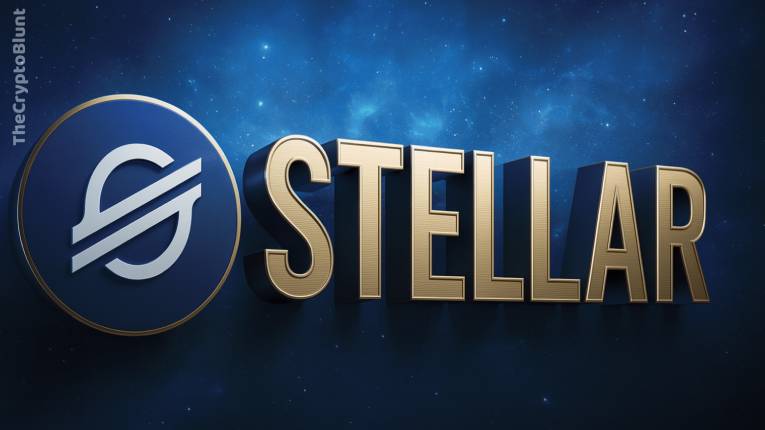When I first started exploring the world of cryptocurrency, terms like “Bitcoin” and “Ethereum” dominated the conversation. They were (and still are) revolutionary in their own right. But as I delved deeper, I discovered projects with a different, yet equally ambitious, vision. One such project immediately stood out: Stellar (XLM).
Unlike some cryptocurrencies aiming to be purely digital gold or power complex decentralized applications, Stellar set its sights on a very specific, and deeply impactful, goal: to connect the world’s diverse financial systems and make money move as easily as email. Imagine a world where sending money across borders is as instant, affordable, and seamless as sending a message to a friend – that’s the future Stellar envisions.
At its heart, Stellar is a decentralized, open-source protocol that facilitates cross-border, cross-currency transactions. Its native cryptocurrency, Lumens (XLM), acts as a crucial bridge asset on this network, ensuring fast, low-cost transfers for individuals, businesses, and financial institutions, particularly those in developing economies often underserved by traditional banking.
In this comprehensive guide, specifically designed for absolute beginners, we’ll embark on a journey to understand Stellar. We’ll uncover its unique history, meet its visionary founder, explore its real-world applications, and gaze into its potential future. Along the way, we’ll demystify common crypto jargon and address prevalent misconceptions, ensuring you gain a clear, accurate, and trustworthy understanding of this fascinating project.
Your Essential Crypto Lexicon: Understanding the Basics
Before we immerse ourselves in the specifics of Stellar, let’s establish a common language. These core concepts are the bedrock of understanding any cryptocurrency, including XLM.
- Cryptocurrency: At its essence, a cryptocurrency is digital money secured by advanced encryption (cryptography). Unlike the money in your bank account, which is managed by a central bank, cryptocurrencies operate on decentralized networks. This means no single government or institution controls them, aiming for transparency, censorship resistance, and often, lower fees for transactions. They exist solely as digital entries on a distributed ledger.
- Blockchain: Picture a public, continuously growing digital ledger. This ledger is composed of “blocks” of information, with each block containing a batch of verified transactions. Once a block is complete, it’s cryptographically linked to the previous one, forming an unbreakable “chain.” This distributed network of computers (nodes) collectively maintains and verifies the ledger, making it incredibly difficult to tamper with.
- Decentralization: This is a core philosophy in the crypto world. It means distributing power and control across a network of participants rather than concentrating it in a single central authority. The goal is to make systems more resilient to failure, manipulation, and censorship. While Stellar has a central non-profit (the Stellar Development Foundation), its network consensus mechanism is decentralized.
- Mining (and why Stellar doesn’t use it):
- Proof-of-Work (PoW): This is the original method, used by Bitcoin. Powerful computers (miners) compete to solve complex mathematical puzzles. The first one to solve it gets to add new transactions to the blockchain and earn rewards. It’s energy-intensive.
- Proof-of-Stake (PoS): A newer, more energy-efficient method. Validators (not miners) “stake” (lock up) their cryptocurrency to earn the right to verify transactions and add new blocks.
- Stellar Consensus Protocol (SCP): Stellar does not use PoW or PoS. Instead, it utilizes a unique consensus mechanism called the Stellar Consensus Protocol (SCP). This protocol allows for very fast and low-cost transactions without the energy demands of mining. We’ll dive deeper into SCP shortly.
- Utility Token: A type of cryptocurrency designed to provide access to a specific product or service within a particular ecosystem. XLM is a utility token, primarily used for network fees and as a bridge currency on the Stellar network.
- Stablecoin: A type of cryptocurrency designed to maintain a stable value, often pegged 1:1 to a fiat currency like the US Dollar (e.g., USDC, USDT). Stablecoins are crucial on the Stellar network for facilitating cross-currency transactions.
- Anchor: A vital concept in the Stellar ecosystem. Anchors are regulated entities (like financial institutions, money transfer services, or fintech companies) that serve as a bridge between traditional fiat currencies and their digital equivalents on the Stellar network. They hold fiat deposits and issue corresponding digital tokens (stablecoins) on the Stellar blockchain, allowing users to move money on and off the network.
The Genesis of Stellar: A Vision for Financial Inclusion
Stellar’s story begins with a prominent figure in the cryptocurrency space and a strong desire to build a more equitable financial system.
Jed McCaleb: A Serial Innovator
The primary founder of Stellar is Jed McCaleb. His name is synonymous with several pivotal moments in crypto history:
- Mt. Gox: He created Mt. Gox, which was once the largest Bitcoin exchange in the world (though he sold it before its infamous collapse).
- Ripple (XRP): He co-founded Ripple, a company focused on enterprise solutions for cross-border payments for banks.
McCaleb’s experience with Ripple, while influential, led him to identify a different need in the market. He envisioned a network that wasn’t solely focused on large financial institutions but aimed to empower individuals, particularly those in underserved regions, with fast, affordable access to financial services. This passion for financial inclusion became the driving force behind Stellar.
The Birth of Stellar: A Fork and a Foundation
In 2014, Jed McCaleb, along with Joyce Kim, launched Stellar. Initially, the Stellar protocol was based on a fork of the Ripple protocol. However, key differences quickly emerged, particularly regarding their consensus mechanisms and target audiences.
Recognizing the need for a non-profit entity to guide the project’s development and ensure its public good mission, McCaleb established the Stellar Development Foundation (SDF). The SDF is a non-profit organization dedicated to building and maintaining the Stellar network’s codebase, supporting its community of developers and businesses, and promoting global financial inclusion. Early funding for the SDF came from a significant grant from Stripe, the online payment processing company.
The Stellar Consensus Protocol (SCP): A Breakthrough in Speed and Security
A pivotal moment in Stellar’s evolution came in 2015 with the introduction of the Stellar Consensus Protocol (SCP). This was a radical departure from the traditional Proof-of-Work (PoW) and Proof-of-Stake (PoS) models.
- Federated Byzantine Agreement (FBA): SCP is an example of a Federated Byzantine Agreement (FBA) system. In essence, instead of all nodes needing to agree, each node chooses a subset of other nodes (called a “quorum slice”) that it trusts. If enough nodes within these overlapping quorum slices agree on a transaction, it’s considered validated.
- Key Advantages of SCP:
- Speed: Transactions confirm in typically 3-5 seconds, making it incredibly fast for payments.
- Low Cost: Transaction fees are minuscule, often fractions of a cent ($0.00001 XLM per operation). This makes micro-payments economically viable.
- Scalability: SCP is designed to handle a high volume of transactions per second, crucial for a global payment network.
- Energy Efficiency: Unlike PoW, SCP does not involve energy-intensive mining, making it an environmentally friendly blockchain.
- Decentralization with Flexibility: While there’s a foundation, the network’s decentralized nature comes from individual entities choosing their trust relationships, preventing any single point of failure or control.
This unique consensus mechanism is what truly sets Stellar apart, enabling its core mission of fast, cheap, and accessible cross-border payments.
The Lumens (XLM): Fueling the Stellar Network
The native cryptocurrency of the Stellar network is called Lumens, traded under the ticker symbol XLM. While it’s often viewed as an investment asset, its primary role within the Stellar ecosystem is that of a utility token.
- Network Fees: A tiny amount of XLM is required for every transaction on the Stellar network (a base fee of 0.00001 XLM). This serves two purposes:
- Anti-Spam: It prevents malicious actors from flooding the network with junk transactions, maintaining its efficiency.
- Resource Management: It ensures that network resources are used efficiently.
- Minimum Account Balance: To maintain an account on the Stellar network, a small minimum balance of XLM (currently 0.5 XLM) is required. This helps deter spam accounts.
- No Mining: As mentioned, XLM is not mined. The initial supply of Lumens was created at the inception of the network. While there was an initial inflation mechanism of 1% per year (which has since been removed by a community vote and burn event in 2019), the Stellar Development Foundation manages a significant portion of the XLM supply, using it to fund development, partnerships, and ecosystem growth.
In November 2019, the Stellar Development Foundation conducted a significant burn event, reducing the total supply of XLM from 105 billion to 50 billion. This decision was made to increase the efficiency of the SDF’s operations and to reflect the actual needs of the network for its mission. While controversial for some in the crypto community, it aimed to streamline the tokenomics for the future.
What Problems Does Stellar Solve? Real-World Applications
Stellar isn’t just about cool technology; it’s about solving tangible, real-world problems. Its focus on speed, low cost, and interoperability makes it particularly powerful for:
- Faster and Cheaper International Payments (Remittances):
- The Problem: Traditional international wire transfers are notoriously slow (days), expensive (high fees, unfavorable exchange rates), and often opaque. This impacts individuals sending money home to families (remittances) and businesses conducting cross-border trade.
- Stellar’s Solution: By leveraging its fast and cheap network, Stellar enables money transfer operators, financial institutions, and individuals to send money globally in seconds for a fraction of a cent. For example, a migrant worker in the UAE can send money to their family in India using a Stellar-powered app, with the funds arriving almost instantly and at a much lower cost than traditional services. This is a game-changer for financial inclusion.
- Experience Tip: “I remember once trying to send money internationally through a bank – the fees were shocking, and it took days! When I learned about Stellar’s ability to do the same thing in seconds for almost no cost, it really highlighted the real-world impact of this technology.”
- Financial Inclusion for the Unbanked and Underbanked:
- The Problem: Billions of people worldwide lack access to traditional banking services due to geographic barriers, lack of identification, or prohibitive costs. This excludes them from the global financial system.
- Stellar’s Solution: Stellar allows anyone with a smartphone and internet connection to access financial services. Through Stellar-powered wallets and applications, individuals can send, receive, and hold digital representations of various currencies (issued by “anchors”). This bridges the gap between traditional finance and the unbanked, enabling them to participate in the digital economy.
- Asset Tokenization and Stablecoins:
- The Problem: Digitizing real-world assets (like fiat currencies, commodities, or even real estate) and moving them efficiently on a blockchain can be complex and costly on some networks.
- Stellar’s Solution: Stellar has built-in features that make it easy for “anchors” (regulated entities) to issue digital tokens that represent real-world assets on the network. A prime example is USDC on Stellar, allowing users to send and receive a US Dollar-pegged stablecoin with Stellar’s speed and low fees. This facilitates seamless conversion between different currencies and assets. Stellar supports various fiat-backed stablecoins, enabling users to maintain a stable store of value even in inflationary economies.
- Microtransactions and Micropayments:
- The Problem: Traditional payment systems often have minimum transaction amounts or fixed fees that make very small payments (micropayments) economically unfeasible.
- Stellar’s Solution: With its near-zero transaction fees, Stellar is ideal for microtransactions. This opens doors for innovative business models, such as paying for digital content per article, micro-lending, or supporting small creators directly.
- Decentralized Exchange (DEX):
- The Problem: Trading cryptocurrencies often requires relying on centralized exchanges that hold your funds, posing a security risk.
- Stellar’s Solution: The Stellar network has a built-in decentralized exchange (DEX). This means users can trade any token issued on the Stellar network directly with other users, without an intermediary holding their funds. This provides a more secure and transparent way to exchange assets.
- Soroban: Smart Contracts on Stellar (Future Development):
- The Problem: While Stellar excelled at payments, it historically lacked robust smart contract capabilities compared to networks like Ethereum, limiting its potential for complex decentralized applications (dApps) and DeFi.
- Stellar’s Solution (Soroban): The Stellar Development Foundation is actively rolling out Soroban, a new smart contract platform built on Stellar. Soroban is designed for scalability, security, and efficiency, allowing developers to build a wider range of dApps, including DeFi protocols, lending platforms, and more complex financial services, directly on the Stellar network using the Rust programming language. This is a significant leap forward for Stellar’s capabilities and future potential.
Stellar’s clear focus on practical, high-impact use cases, particularly in cross-border payments and financial inclusion, truly differentiates it in the crowded crypto landscape.
Dispelling the Shadows: Common Misconceptions About Crypto and Stellar
The world of cryptocurrency is often shrouded in myths and misunderstandings. Let’s tackle some common ones head-on, with a specific focus on how they relate to Stellar.
- “Cryptocurrency is only for criminals / it’s a scam.”
- Reality: This is perhaps the most persistent and damaging misconception. While early adopters, like any new technology, included nefarious actors, cryptocurrencies and blockchain technology are now increasingly regulated and embraced by legitimate businesses and governments worldwide. The transparent nature of public blockchains often makes illicit activities more traceable than cash.
- Stellar’s Context: Stellar, guided by the non-profit Stellar Development Foundation (SDF), has a strong emphasis on regulatory compliance and working with regulated financial institutions (“anchors”). Projects building on Stellar often implement KYC (Know Your Customer) and AML (Anti-Money Laundering) procedures. Stellar’s mission to facilitate financial inclusion in developing economies is a far cry from a criminal enterprise; it aims to bring legitimate financial services to underserved populations. Many global corporations and NGOs use or are exploring Stellar for transparent and efficient aid distribution and payments.
- “All crypto is bad for the environment because of ‘mining’.”
- Reality: This misconception primarily stems from Proof-of-Work (PoW) blockchains like Bitcoin, which consume significant energy. However, it’s a generalization that doesn’t apply to the entire crypto space.
- Stellar’s Context: As discussed, Stellar does not use Proof-of-Work mining. Its Stellar Consensus Protocol (SCP) is an extremely energy-efficient consensus mechanism. Nodes on the Stellar network reach agreement without solving complex computational puzzles, meaning its carbon footprint per transaction is negligible compared to PoW chains. This makes Stellar an environmentally conscious choice for digital payments.
- “Stellar is just like Ripple (XRP) – they’re the same thing.”
- Reality: This is a very common misconception due to Jed McCaleb’s involvement in both projects and their shared focus on payments. While they share similarities (both aim to facilitate fast, low-cost cross-border payments, and neither uses traditional mining), their fundamental approaches and target markets differ significantly.
- Stellar’s Context:
- Target Audience: Stellar’s mission, driven by the non-profit SDF, is to create equitable access to the global financial system, focusing on individuals and smaller businesses, especially in developing countries (the “unbanked” and “underbanked”).
- Decentralization: Stellar’s SCP allows for a more open and decentralized participation model. While nodes choose their trusted “quorum slices,” the network is designed to be accessible to anyone to run a validator.
- Open Source: The Stellar network is entirely open-source.
- Transparency: The SDF operates with a high degree of transparency regarding its XLM holdings and how it uses funds for ecosystem development.
- Ripple’s Context (briefly):
- Target Audience: Ripple and its token XRP are primarily focused on serving large financial institutions and banks for interbank settlements.
- Centralization/Permissioned: RippleNet operates on a more permissioned network, with Ripple Labs having significant control over the validators and the overall system.
- Consensus: Ripple uses the Ripple Protocol Consensus Algorithm (RPCA), which relies on a set of trusted validators.
- The Difference: Think of it this way: Ripple aims to be the “SWIFT for crypto” for banks, streamlining their existing operations. Stellar aims to be the “global payment network for everyone,” creating new access points and fostering financial inclusion.
- “Cryptocurrency will replace all traditional money.”
- Reality: While cryptocurrencies offer significant advantages and are growing in adoption, the idea of them completely replacing fiat currencies (USD, INR, EUR) in the near future is highly unlikely and not necessarily their direct goal. Many believe a hybrid future is more probable, where traditional and digital currencies coexist and interact.
- Stellar’s Context: Stellar’s design actively facilitates the interaction between fiat currencies and cryptocurrencies through its “anchors” and stablecoin capabilities. Its strength lies in making existing fiat money move better across borders, rather than replacing it entirely. It’s about interoperability and efficiency for all forms of value, not necessarily total disruption of national currencies.
By addressing these common myths, we aim to provide a more nuanced and accurate picture of Stellar’s role and potential in the evolving global financial landscape. We believe that informed understanding is the first step towards thoughtful engagement with this transformative technology.
Getting Started with Stellar (XLM): Your Beginner’s Guide
If Stellar’s mission resonates with you, acquiring and using XLM is a relatively straightforward process. Remember, this is not financial advice, but a general guide to help you navigate the initial steps.
1. Understanding XLM’s Role
- Utility First: Remember that XLM’s primary utility is within the Stellar network for transaction fees and as a bridge currency.
- Asset Type: XLM is a cryptocurrency, and its value, like all cryptocurrencies, can be volatile.
2. Acquiring Stellar Lumens (XLM)
The most common way to get XLM is through a cryptocurrency exchange:
- Centralized Exchanges (CEXs): These are the easiest entry point for beginners.
- Popular CEXs: XLM is listed on almost all major global exchanges, including Binance, Coinbase, Kraken, OKX, Bybit, and many others. In India, exchanges like WazirX, CoinDCX, and CoinSwitch Kuber often list XLM.
- Process:
- Sign Up & KYC: Register an account on a reputable exchange. You will need to complete their Know Your Customer (KYC) verification process, which involves providing government-issued ID (like an Aadhaar Card or Passport in India) and sometimes proof of address. This is a standard security and regulatory requirement.
- Deposit Funds: Deposit fiat currency into your exchange account using methods like bank transfer, UPI (in India), or other available payment options. Alternatively, if you already hold other cryptocurrencies, you can deposit those.
- Buy XLM: Navigate to the trading section of the exchange. Search for the XLM trading pair (e.g., XLM/INR, XLM/USDT, XLM/BTC). Enter the amount of XLM you wish to buy and place your order.
- Pros: User-friendly interfaces, high liquidity, familiar structure similar to online banking or stock trading.
- Cons: When your XLM is held on a centralized exchange, you don’t fully control your private keys (“not your keys, not your crypto”). This means you’re trusting the exchange with your assets.
3. Storing Stellar Lumens (XLM): Choosing a Wallet
Once you’ve acquired XLM, you need a secure place to store it.
- Exchange Wallet (Convenient for Trading): If you plan to actively trade XLM or use it directly on the exchange for its benefits, keeping it in your exchange wallet is the most convenient option. However, as noted, this means relying on the exchange’s security.
- Hardware Wallets (Cold Storage – Most Secure): For long-term storage of significant amounts of XLM, a hardware wallet (like Ledger Nano S/X or Trezor) is highly recommended. These physical devices store your private keys offline, making them virtually immune to online hacks.
- Experience Tip: “When I started accumulating more crypto, the thought of it sitting on an exchange made me nervous. Investing in a hardware wallet felt like a significant step towards truly owning my digital assets and gave me peace of mind.”
- Software Wallets (Hot Wallets – Balanced Convenience/Security): These are applications you install on your computer (desktop wallets) or smartphone (mobile wallets). They offer a good balance of convenience and security, allowing you to control your private keys. Examples include Lobstr, StellarPort, or Exodus (multi-currency). Always download wallets only from official sources (app stores, project websites) to avoid scams.
- Paper Wallets (Advanced/Risky): This involves printing your public and private keys on paper. While offline, they are susceptible to physical damage, loss, and require careful handling. Generally not recommended for beginners.
4. Using Stellar: Sending, Receiving, and Ecosystem Apps
- Sending/Receiving XLM:
- Receiving: To receive XLM, simply provide your Stellar wallet address to the sender. Stellar addresses typically start with “G”.
- Sending: To send XLM, you’ll need the recipient’s Stellar address. You’ll also need to pay a tiny transaction fee in XLM.
- Memo/Tag (Important!): When sending XLM to or from an exchange, you must include a “memo” or “destination tag” in addition to the wallet address. This unique identifier tells the exchange which specific account the funds belong to. Failing to include the correct memo can result in permanent loss of funds. Always double-check!
- Exploring Stellar Ecosystem Apps: Many applications are built on Stellar to leverage its fast and cheap transactions:
- Remittance Apps: Look for apps that enable international money transfers using Stellar (e.g., MoneyGram uses Stellar for its USDC payments).
- Wallets with Built-in DEX: Some Stellar wallets allow you to access the decentralized exchange directly to trade assets.
- Financial Inclusion Apps: Projects aimed at bringing banking services to underserved communities often use Stellar.
A Crucial Word of Caution (Essential Disclaimer): Investing in and interacting with cryptocurrencies and utility tokens carries significant risks. The value of your investment can fluctuate wildly, and you could lose all of your capital. Cryptocurrency markets are highly volatile and unpredictable. This guide is for educational purposes only and does not constitute financial or investment advice. Always conduct your own thorough research (DYOR) and understand the significant risks involved before engaging in any activities. Never invest or trade with money you cannot afford to lose.
Glimpsing the Horizon: The Future of Stellar (XLM)
The future of Stellar and XLM is shaped by its continued development, strategic partnerships, and its ability to adapt to the evolving global financial landscape. Several key areas will define its trajectory:
1. Soroban and Smart Contract Expansion
- DeFi and dApps: The successful rollout and adoption of Soroban, Stellar’s smart contract platform, is arguably the most significant development for its future. This will unlock a vast array of new use cases, including decentralized finance (DeFi) applications, NFTs (Non-Fungible Tokens), and more complex enterprise solutions that were previously challenging to build on Stellar.
- Developer Adoption: The Stellar Development Foundation has allocated significant funds (e.g., a $100 million Soroban Adoption Fund) to incentivize developers to build on Soroban, which will be crucial for fostering a vibrant dApp ecosystem.
2. Deepening Fiat-Crypto Bridges with Anchors
- Global On/Off-Ramps: Stellar’s success hinges on its network of “anchors” – the regulated entities that provide the on-ramps (depositing fiat and getting stablecoins on Stellar) and off-ramps (redeeming stablecoins for fiat). Expanding this network, especially in developing economies, is critical for increasing financial inclusion and making the network truly global.
- Stablecoin Dominance: As stablecoins become increasingly integrated into mainstream finance, Stellar’s efficiency for USDC and other fiat-backed tokens will position it as a key infrastructure layer for global digital payments. Partnerships like the one with MoneyGram leveraging USDC on Stellar highlight this potential.
3. Financial Inclusion and Remittances
- Continued Focus: Stellar’s core mission of serving the unbanked and underbanked remains highly relevant. As global remittances continue to grow, Stellar’s ability to offer cheaper and faster alternatives will be a persistent driver of adoption.
- Aid Distribution: Stellar Aid Assist, a solution leveraging the network for fast and low-cost aid distribution in crisis situations, showcases a powerful humanitarian use case that could see further expansion.
4. Regulatory Clarity and Institutional Adoption
- Compliance is Key: As a network that actively seeks to bridge traditional finance with crypto, Stellar and the SDF are deeply engaged with regulators globally. Clear regulatory frameworks for stablecoins and digital assets will create a more favorable environment for institutional adoption of Stellar’s technology.
- Enterprise Solutions: As more enterprises explore blockchain for payment solutions, supply chain finance, and asset tokenization, Stellar’s focus on speed, cost, and compliance positions it as an attractive platform.
5. Competition and Evolution
- Competitive Landscape: Stellar operates in a highly competitive space, with other blockchain networks and traditional payment systems vying for market share. Its ability to innovate, maintain low fees, and expand its network will be key to its long-term success.
- Network Upgrades: The Stellar Development Foundation consistently works on network upgrades and improvements to enhance performance, security, and functionality. Staying ahead technically is vital.
Ultimately, Stellar’s future is painted with the colors of interoperability and accessibility. By continuing to build robust infrastructure, fostering strategic partnerships, and staying true to its mission of creating a more inclusive global financial system, Stellar aims to carve out a significant and lasting role in the digital economy.
Conclusion: Stellar – Bridging the Financial Divides
Stellar (XLM) represents a compelling narrative in the cryptocurrency world. It’s not about being the biggest, but about being the most effective at its chosen mission: to create a universally accessible financial network where value moves with the speed and ease of information. From its visionary founder, Jed McCaleb, to its unique Stellar Consensus Protocol (SCP) and its practical focus on cross-border payments and financial inclusion, Stellar offers a powerful alternative to the inefficiencies of traditional finance.
For beginners, understanding Stellar provides a crucial perspective on the diverse applications of blockchain technology. It demonstrates that cryptocurrencies aren’t just for speculative trading or complex decentralized applications, but can serve as powerful tools for solving tangible, human-centric problems. As the world continues to digitalize, Stellar’s commitment to building bridges between different currencies and financial systems positions it as a key player in shaping a more connected and equitable global economy. We encourage you to continue learning, exploring the Stellar ecosystem, and engaging with the possibilities that this unique project unlocks.























